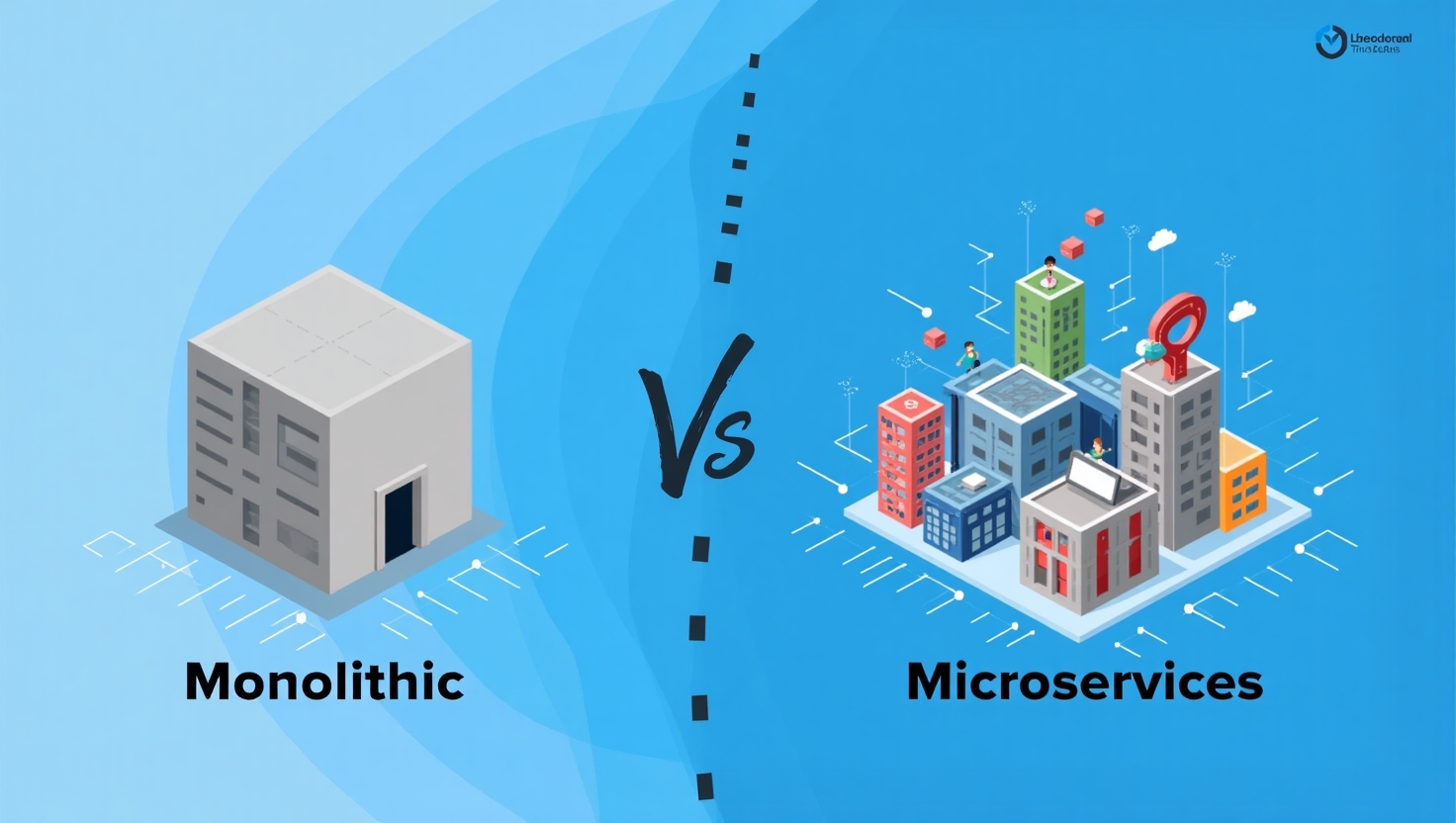1. Monolithic Architecture
Concept:
A monolithic architecture is a traditional approach where all the components of an application (frontend, backend, database, etc.) are tightly coupled and deployed as a single, unified unit. This means the entire application is built, tested, and deployed as one large service.
Key Characteristics:
- Single Codebase: All functionalities reside within a single codebase.
- Centralized Deployment: The entire application is deployed as a single unit.
- Shared Resources: Components often share the same memory space and resources.
- Simpler Initial Development: Can be easier to set up and develop initially for smaller projects.
- Scalability Challenges: Scaling individual components can be difficult; the entire application needs to be scaled even if only one part is under heavy load.
- Technology Stack Consistency: Typically uses a single technology stack across the entire application.
Pros:
- Easier Initial Development: Can be quicker to get started, especially for small teams and less complex applications.
- Simplified Deployment: Only one unit needs to be deployed and managed.
- Centralized Logging and Monitoring: Easier to implement centralized logging and monitoring initially.
- Easier Testing (Initially): End-to-end testing can be simpler in the early stages.
Cons:
- Scalability Limitations: Difficult to scale individual components independently. Scaling often involves scaling the entire application.
- Technology Lock-in: Difficult to adopt new technologies or languages for specific parts of the application.
- Deployment Bottleneck: Deploying changes, even small ones, requires redeploying the entire application.
- Larger Codebase: Can become complex and harder to manage as the application grows.
- Lower Fault Tolerance: If one component fails, the entire application might be affected.
- Slower Development Cycles (Over Time): As the codebase grows, build and deployment times can increase.
Analogy: Imagine a single, large building where all departments of a company are housed. While communication might be easy initially, as the company grows, moving departments or renovating becomes a complex and disruptive process affecting everyone.
2. Microservices Architecture
Concept:
Microservices architecture is a distributed approach where the application is broken down into a collection of small, independent services that communicate with each other over a network, often using lightweight protocols like HTTP/REST or gRPC. Each service is responsible for a specific business capability and can be developed, deployed, and scaled independently.
Key Characteristics:
- Small, Independent Services: Each service focuses on a specific business capability.
- Decentralized Development: Different teams can work on different services using their preferred technologies.
- Independent Deployment: Each service can be deployed and updated independently without affecting other services.
- Polyglot Persistence: Services can choose the database technology that best suits their needs.
- Increased Complexity: Overall system design and management are more complex.
- Improved Scalability: Individual services can be scaled independently based on their specific needs.
- Better Fault Isolation: If one service fails, other services can continue to function.
Pros:
- Improved Scalability: Each service can be scaled independently.
- Technology Diversity: Allows teams to choose the best technology stack for each service.
- Faster Development Cycles (Over Time): Smaller, independent codebases allow for quicker development and deployment.
- Better Fault Isolation: Failures in one service are less likely to impact the entire application.
- Easier to Understand and Maintain Smaller Codebases: Individual services are typically smaller and more focused.
- Enhanced Resilience: The application can be more resilient to failures.
Cons:
- Increased Complexity: Designing, deploying, and managing a distributed system is more complex.
- Network Latency: Communication between services introduces network latency.
- Distributed Transactions: Managing transactions across multiple services can be challenging.
- Increased Operational Overhead: Requires more infrastructure and tooling for monitoring, logging, and tracing.
- Testing Complexity: Integration testing across multiple services can be more complex.
- Service Discovery: Requires mechanisms for services to find and communicate with each other.
Analogy: Imagine a company housed in multiple smaller, specialized buildings (services) that communicate with each other to achieve the overall business goals. Each building can be expanded or renovated independently without disrupting the operations of other buildings.
Head-to-Head Comparison Table:
| Feature | Monolithic Architecture | Microservices Architecture |
|---|---|---|
| Codebase | Single, large | Multiple, small, independent |
| Deployment | Single unit | Independent units per service |
| Scalability | Difficult to scale individual parts | Independent scaling of services |
| Technology Stack | Typically uniform | Can be diverse per service |
| Fault Tolerance | Lower; failure can affect the entire app | Higher; better isolation of failures |
| Development Speed (Initial) | Faster for small projects | Can be slower initially due to setup |
| Development Speed (Long-term) | Can slow down as codebase grows | Faster for individual services |
| Complexity | Lower initially | Higher overall system complexity |
| Team Structure | Often requires larger, cross-functional teams | Smaller, focused teams per service |
Conclusion:
The choice between Microservices and Monolithic architecture is a critical decision that depends heavily on the specific requirements of your project, the size of your team, and your long-term goals. Monolithic architectures can be a good starting point for smaller, less complex applications, while Microservices are often preferred for larger, more complex, and evolving systems that require scalability, flexibility, and resilience. There is no one-size-fits-all solution, and many organizations even adopt a hybrid approach, starting with a monolith and gradually breaking it down into microservices over time. Understanding the trade-offs of each pattern will enable you to make an informed decision that sets your application up for success. Stay tuned for the next Daily Comparison!
